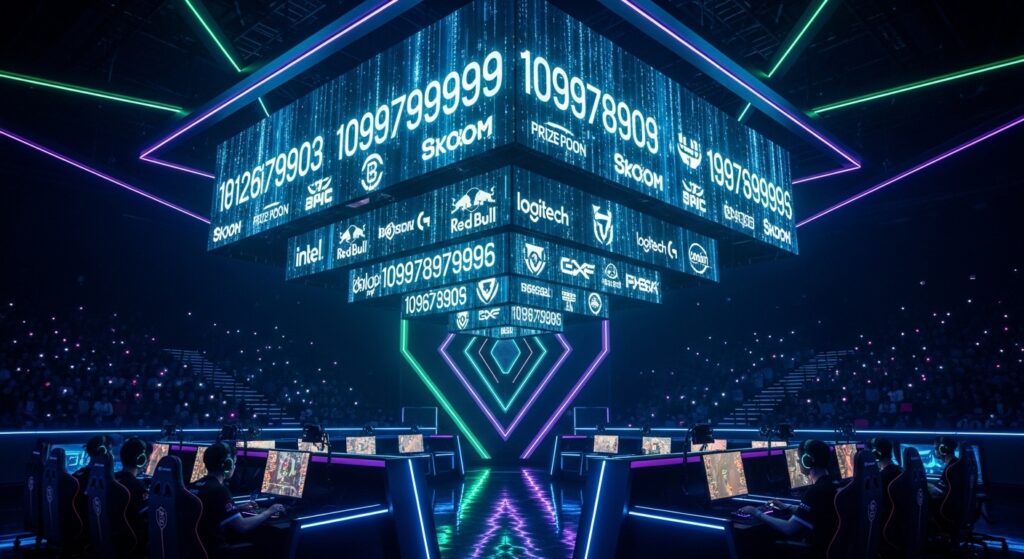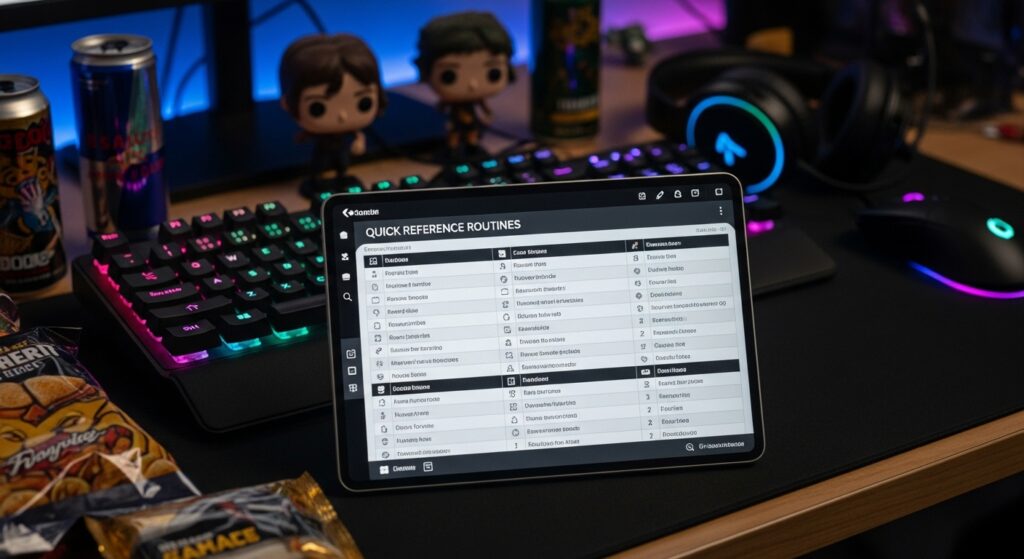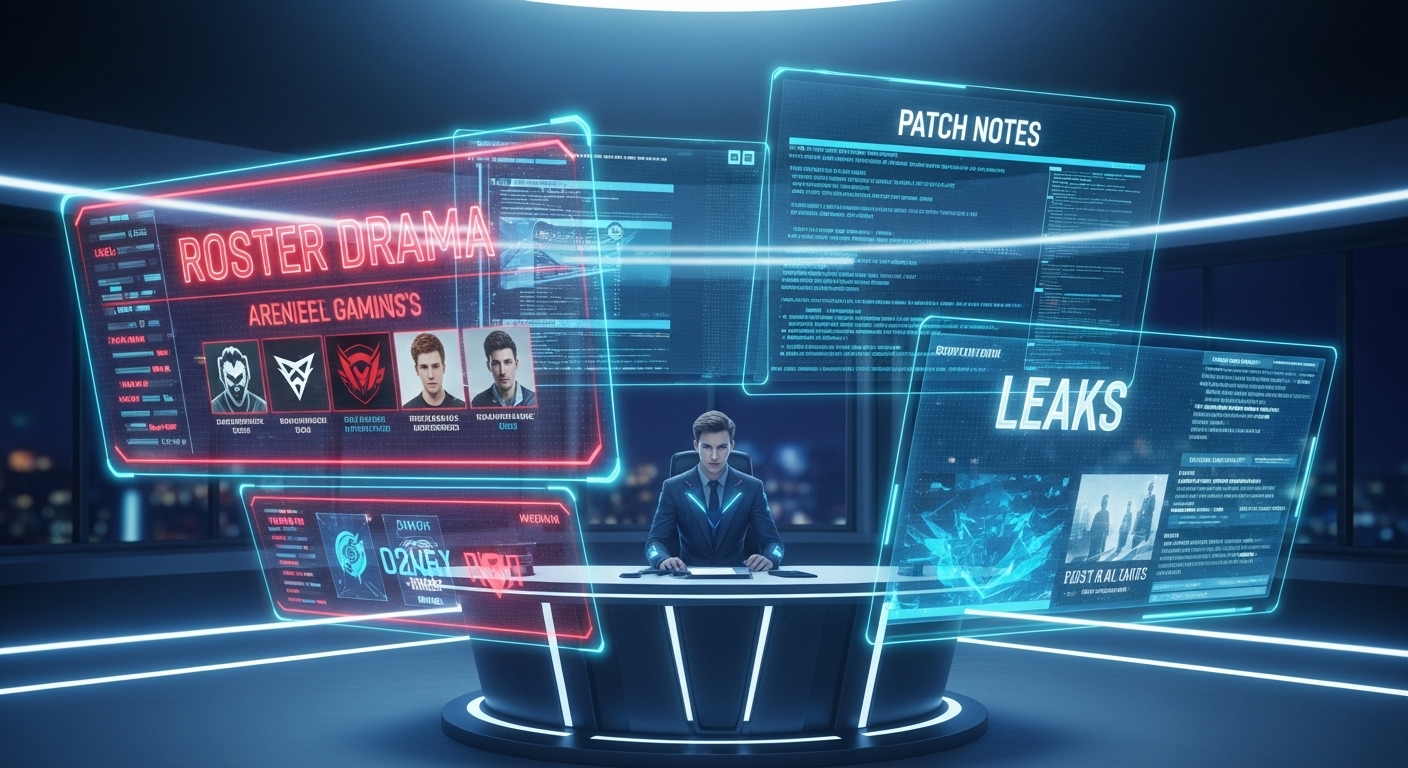If you’ve hung around my corner of the internet before, you know I basically live inside the firehose of breaking news in competitive gaming. In my experience, it’s a messy stream: esports updates, fast tournament results, roster changes that hit at midnight, patch notes that blow up the meta, and live coverage that either saves your day or ruins your sleep. I’ve always found that the news cycle in esports moves faster than a top pro’s APM, and somehow still manages to be late. Welcome to my office. It’s a browser with forty tabs and a lukewarm coffee that I’ve reheated three times.
What “news” actually means here (and why I never sleep)

People think news in esports is simple: a team wins, a patch drops, someone retires. Sure. And pizza is just bread. The truth is, news here has layers. The headline is the shiny thing. The real meal is what sits underneath: contract windows, buyouts, scrim leaks, sponsor pressure, internal team politics, and sometimes a player’s stomach bug right before a LAN. I’ve reported on all of it. I’ve also misread patch notes at 2 a.m. and sent a panicked text to a coach who absolutely did not appreciate the wake-up call. My bad. He still sends me “GG” every time I post a correction.
My usual sources (don’t judge me)
In my day-to-day, I watch pro player streams, Discord servers (many), team subreddits, tournament admin channels, and yes, the dreaded social posts that get deleted after three minutes. I also keep a spreadsheet of rosters, contract end dates, visa issues, and “rumor fuel.” Please don’t ask me to share that sheet. I’d have to blur 90% of it. There’s also the press releases—the ones that say nothing but sound like a lot. And embargoes. My old nemesis. If you’ve never sat on a story for 48 hours while someone else leaks it 47.5 hours in, you haven’t lived the true content creator life.
Mainstream coverage, when it shows up
I use mainstream sources to cross-check tone and facts. It’s not perfect, but it helps sanity-check hype. If you want a steady feed, AP actually keeps an esports page at AP’s esports hub. And if you like your news with a British accent and a bit more restraint, BBC Sport’s esports page is decent for high-level context. Do they catch the mid-season roster shuffle at 3 a.m.? No. Do they avoid calling every game a “cult phenomenon”? Usually.
Roster chaos: my favorite soap opera
I’ve always found roster news to be the most human. Contracts end. Buyouts get messy. Someone’s girlfriend posts something she shouldn’t have. That kind of thing. I once had a coach call me from the airport because a player had “decided to find himself” right before a major qualifier. The coach asked for media advice. I told him to say the guy was sick. He said the truth would be better. It wasn’t.
Why roster news is never simple
- There’s the “official story” and then the backchannel story.
- Agents say one thing. Scrims say another.
- Buyouts are often too high. Tier-2 teams get stuck in limbo.
- Visa problems can end a season before it starts.
- Players burn out. That’s real. Travel, practice, pressure—it crashes people.
Any time a big move drops, I check three things: money, timing, and fit. Money because it explains half of esports. Timing because it explains the other half. And fit because that’s the part fans care about when the team starts losing and everyone wants a scapegoat.
Patch notes roulette: the guns, the nerfs, the crying
Game patches are my daily cardio. One minute the meta is stable. Next minute the devs push a balance patch mid-event. Surprise! I once watched a team swap their whole comp between maps because a hero they’d practiced for weeks got nerfed an hour before the match. They won out of pure spite. It was beautiful. Not healthy, but beautiful.
How I read a patch (when I’m not screaming)
- Ask: Is this a meta shift or a bug fix sweep?
- Check what changes matter in pro play vs. casual. Different worlds.
- Look at map reworks and utility economy (in FPS) or jungle/laning changes (in MOBA). That’s where series swing.
- Wait for scrim leaks. Pro coaches will pretend they’re chill, then ban the same hero every map. That’s your tell.
I’m not shy about texting players I’m friendly with to ask, “Is this patch a troll?” The best answer I got last year: “It’s a prank that turned into a religion.” We still laugh about that one.
Tournaments: online qualifiers vs. LAN reality
Let me be blunt. Online qualifiers are chaos. LANs are chaos with better lighting. Ping issues, server drama, DDoS rumors, and that one team that insists their cousin’s basement has the best connection. It’s always the cousin’s basement. Admins get yelled at. Then yelled at again. I don’t envy them.
Seeding and bracketing: where the fights start
Fans love to debate seedings. Teams love to debate seedings. I love to eat popcorn and read the “competitive integrity” threads. Seeding is part science, part vibes, and part who finished top-four last month. I say this with love: people underestimate variance in online brackets. Upsets happen because the floor is higher than folks think. Also because someone’s internet decided it hates them.
LAN drama checklist
- Audio issues on Day 1. Count on it.
- Schedule slip. It’s already late. It will get later.
- Practice room leaks. Someone records a scrim. It gets posted. Oops.
- Tech pauses that turn into lunch breaks. Good for me. Bad for pacing.
- One MVP-level performance from a player nobody predicted. You love to see it.
Viewership and “the number” game
Every event, someone posts concurrent viewers like it’s gospel. I like numbers. I also like context. Was there co-streaming? Were there drops? How many channels? What was the time zone? Did the match overlap with a monster release or a rival final? Sponsors care about “the number.” But smart sponsors care about engagement, watch time, and fan sentiment. The rest is just confetti.
Co-streamers: the chaos magic
Co-streams are the best thing to happen to reach, and the worst thing to happen to narrative control. I’ve seen a co-streamer misread a rule and kick off a false outrage that dominated the night. That said, I’m a fan. Co-streamers make the ecosystem feel alive. The official broadcast can’t be everything to everyone. Let creators be creators. Just make the rules clear.
Journalism vs. leaks (the awkward dance)
I’ve been doing this long enough to know the difference between a tip and a trap. A “friend of a friend” who knows a coach who once bought coffee with a player’s cousin is not a source. It’s noise. But sometimes the noise is right. That’s the awkward part. I’d rather be right late than wrong early. Doesn’t mean I always pull it off. I’ve posted corrections. More than once. The apology DMs are the worst. You feel like you crashed someone’s scrim room.
When I hit publish (and when I don’t)
- If it affects players’ jobs or visas, I double-verify. No exceptions.
- If it’s purely hype with no impact, I label it as rumor and move on.
- If a dev team asks for time to fix a serious bug, I might wait—if player safety or match integrity is involved.
- If it’s public enough that five other outlets have it, I add my own context. People follow me for commentary, not just headlines.
Want a feed that doesn’t waste your time?
I keep a short list of sources I check when I want signal over noise. For quick scans and link-outs to real stories, this running feed of esports news stays pretty current. I also drop in community servers where team analysts lurk—no, I won’t link those here. I like being invited back.
How I actually work on match days
On big weekends, my desk looks like a control room. Two monitors for live matches. One for social. One for notes. Phone for whispers and coach texts. And a notebook, yes, paper, because when the power trips you still need your quotes. I jot down timestamps, comps, weird econ rounds, and any admin rulings. If something looks off—like a weird client bug—I mark it with a star and hunt for a clip later.
My match-day checklist
- Double-check the schedule. It’s probably wrong.
- Open rulebook in a tab. You’ll need it when someone asks if coaching is allowed during pauses.
- Track map picks/bans or draft order. That’s your story spine.
- Listen for caster phrasing. They often hint at scrim trends without saying it outright.
- Keep a running list of standout rounds/plays for a recap.
Patterns that predict tomorrow’s headline
I’m not a wizard. I’m just old in esports years. But there are tells. When a dev goes radio-silent before a major patch, expect something spicy. When a GM starts tweeting song lyrics at 1 a.m., brace for a roster move. When an event announces “enhanced security protocols,” someone got DDoS’d last week. You learn the smell of smoke before you see the fire.
Seven patterns I watch
- Sudden scrim silence from a usually loud team = internal shakeup.
- Players tweeting about “taking time for mental health” = schedule or travel pressure boiling over.
- Community managers using “clarifying language” = a rule or format change is about to annoy people.
- Practice partners switching = meta shift or secret strat.
- Franchise owners posting “proud of the boys” after losses = sponsor damage control.
- Analysts pull out spreadsheets on Twitter = meta has broken, and we’re about to see weird picks.
- Sudden PTR activity with streamer invites = balance patch “community tested.” Prepare your salt.
Money talk (because it always is)

Prize pools sound huge. Payout timelines, taxes, splits—less huge. I’ve watched players wait months for prize checks. I’ve seen orgs push bonuses to “next quarter.” And I’ve seen teams spend a fortune getting visas handled, only to get bounced by paperwork. Money stories aren’t sexy, but they explain so many moves: why a star player takes a weird offer, why a team relocates, why a tournament slashes broadcast costs and leans into co-streams. Follow the money, and then check if the travel budget makes sense. It often doesn’t.
“Tables” I keep in my head (and sometimes scribble on napkins)
News signal cheat sheet
- Source: Official team statement | Trust: High for facts, low for spin | Action: Verify details, look for what’s not said
- Source: Player stream clip | Trust: Medium | Action: Check context and date, ask for a full VOD
- Source: Anonymous Discord leak | Trust: Low | Action: Cross-check with two independent people
- Source: Tournament admin note | Trust: High | Action: Save a copy, rules change mid-event sometimes
- Source: Dev patch notes | Trust: High for numbers, medium for impact | Action: Wait for pro feedback
Event day risk meter
- Risk: Server/ping | Likelihood: Medium | Impact: High | Prep: Have statement language ready
- Risk: Audio/tech | Likelihood: High | Impact: Medium | Prep: Extra time in your schedule
- Risk: Competitive ruling | Likelihood: Low | Impact: Very high | Prep: Rulebook bookmarked
- Risk: DDoS/latency | Likelihood: Low to Medium | Impact: Very high | Prep: Watch official channels
- Risk: Patch hotfix | Likelihood: Medium post-patch | Impact: Medium | Prep: Track dev posts
The human stuff that gets missed
Under every headline is a person. A player who hasn’t seen home in three months. A coach sleeping four hours a night. A rookie freaking out because his first LAN looks like a rock concert. I’ve talked to players who felt crushed by Reddit threads. I’ve heard managers panic about flights and passports. This space can be loud and mean, and also kind of magical. I keep reminding myself: be fair, be early if you can, be right if you can’t be early, and be kind when it matters. Most days I pull that off. Some days I don’t. I try again.
What I post vs. what I pocket
People assume I publish everything I hear. I don’t. I keep some things quiet because it helps people, or because it’s not my story to tell. I also wait on stuff that could wreck a match day unless it’s truly vital. Do I get burned sometimes by someone else dropping it first? Yeah. Happens. But I sleep better. And the people I cover tend to call me back. That matters more than a few extra retweets.
When the speed matters
There are moments where the speed itself is the story. Live match bug. Server crash. Bracket redraw. That’s where I jump. I’ve literally typed with one hand while holding my phone to my ear with the other, getting a quote from a TO on a hallway floor. You do what you have to do. That’s the job.
Tiny playbook for reading esports headlines fast
- If a roster announcement avoids saying “long-term,” assume a short-term or trial deal.
- If a patch note reads “adjusted,” check numbers. Could be a nerf wearing a hat.
- If an event pushes a “format update,” expect seeding drama.
- If a player posts a TwitLonger late Sunday, it’s either a role change or a retire/return tease.
- If a sponsor appears in every sentence, the story is an ad. Move on.
Where I think this is headed
We’re not slowing down. More games joining the pool. More publishers trying to “own” the scene. More co-streaming. More creator broadcasts. Better anti-cheat (we hope). Smarter schedule design (we pray). And probably a few more “surprise” patches that make coaches age five years overnight. Honestly, I love it. This is sports, but with patch notes and chat spam. It’s chaos with a scoreboard.
Why I still enjoy this mess
Because it’s alive. Because a player can go from unknown to monster in one tournament. Because strategy evolves in real time, and we all get to watch the sausage get made. And because every so often, I write something that helps a fan understand the game they love a little better. That’s the nice part. That, and the memes.
Quick-reference “tables” you asked for
Roster move decoder
- Phrase: Mutual parting | Translation: One side unhappy | Watch for: Player joins rival within a week
- Phrase: Loan deal | Translation: Tryout without commitment | Watch for: Role clash in scrims
- Phrase: Moving to content | Translation: Benched, but brandable | Watch for: Stream spike, then quiet exit
- Phrase: Exploring options | Translation: Agent calling everyone | Watch for: Buyout leaks
- Phrase: Role swap | Translation: Roster fix attempt | Watch for: Two-week honeymoon, then data
Patch impact snapshot
- Scope: Weapon numbers changed | Impact: Medium | Likely effect: New economy patterns
- Scope: Hero/agent rework | Impact: High | Likely effect: Draft priority flips
- Scope: Map pool update | Impact: High | Likely effect: Practice load spikes
- Scope: Bug fixes | Impact: Low to Medium | Likely effect: Edge cases in playoffs
- Scope: Economy overhaul | Impact: Very high | Likely effect: Upset volatility

A note on the “breaking” part
If you’re here for the pure adrenaline of breaking news in competitive gaming, I get it. I live for that moment too. But the better game is seeing the pattern before it breaks. Read between the lines. Watch the scrims nobody mentions. Follow the analysts who don’t tweet much. And when it does break, know the why, not just the what. That’s where the fun is.
One last thing before I log off
If you see me post a story at an absurd hour, just assume something went wrong with a bracket, a patch, or a player’s flight. Or all three. Happens more than I want to admit. Anyway, I’ll be around. You know where to find me. And if you’ve got something real, you can always drop me a line. I won’t burn you. Not unless you make me read another 900-word “mutual parting” statement with zero actual information. Then we’ll talk. Kidding. Mostly.
FAQs (for friends who DM me at 2 a.m.)
- Is it normal for patches to drop in the middle of a tournament? Sadly, yes. Depends on the game. Some devs pause patches during majors; others don’t. I always check the dev calendar and player streams for heads-up.
- How do you tell a real roster leak from fake? If two trusted people with different ties say the same thing, I take it seriously. Single-source, I sit on it. Also, look for paper trails like contract windows and agent activity.
- Why do viewership numbers look huge sometimes and tiny other times? Co-streams, drops, time zones, and overlap with other events. Also platform splits. A big chunk can be watching on a creator channel, not the main one.
- Are players actually protected by rules when stuff goes wrong? It varies by game and organizer. Good TOs have strong rulebooks and appeals. Others wing it. I keep rulebooks in a tab for exactly this reason.
- Where should I follow day-to-day esports stories without drowning? Start with a curated feed like the esports news page I check, then add one or two game-specific community spots. Too many servers will melt your brain.
Alright, that’s enough from me for today. I’m going to go pretend my coffee is still warm and watch scrims that totally aren’t supposed to exist. And yes, I see your DMs. I’ll get to them after this map. Or the next one. You know how it goes with breaking news in competitive gaming.

John | Your source for Esports, Battle Royale, Role-Playing, Retro Games, and Gaming Gear. Let’s Enjoy!




This article is like a thrilling soap opera with a side of lukewarm coffee. Entertaining read for sure.
Love the chaotic energy of esports roster drama, can’t wait to see how it all unfolds!
Esports news is like a soap opera on steroids, with real human drama and high-stakes competition. Fascinating stuff!
Love the insight into the chaotic world of esports news! Exciting drama behind the scenes.
Love the behind-the-scenes look at esports news reporting! It’s a whole new world of drama and excitement.
The chaos and drama of roster changes in esports are truly addictive to watch unfold.
Esports news is a wild ride, from roster drama to patch notes chaos. The human side is fascinating!
Esports news is always a wild ride, but the behind-the-scenes drama makes it worth it. Can’t wait for more!
What’s the most bizarre roster drama you’ve come across while reporting on esports?